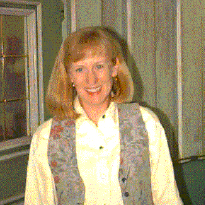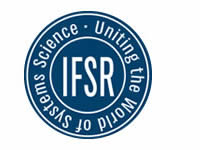IFSR Newsletter 1996 Vol. 15 No. 3 October
Sue McCormick,
Saybrook Graduate Research Institute
28 Grandview Drive, Bigfork, MT 59911 USA
sue@digisys.net , Tel: 406.837.4611, Fax: 406.837.4399
The Future Search conference, developed by Marvin Weisbord and Sandra Janoff, is a large group planning tool for organizational and community-based change. Banathy (1996) recognizes the Future Search strategy as an effective front end approach for a comprehensive systems design process (1996). In a recent paper Tim Waters and I identified the Future Search conference as one of five strategies for developing design capacity and readiness for change in educational learning communities (1996).
Weibord and Janoff (1995) respectfully acknowledge many other conference processes that “overlap” the Future Search process. Emery and Trist’s Search Conference model is noted as having contributed significantly to the Future Search methodology. The authors cite Bohm’s Dialogue Group, Owen’s Open Space Technology and the participative strategic planning conference of Dannemiller and Jacobs as related processes that share characteristics with the Future Search, yet serve unique functions in large-scale organizational and community change efforts, depending on the goals, values and capabilities of the system. I concur with Weisbord and Janoff, but would hasten to point out there does seem to be an appropriate and comfortable “fit” between the Future Search strategy and systems design.

Systems Design and the Future Search Conference
Sue McCormick, IFSR Newsletter 1996 Vol 15 No 3 October
A Future Search conference lasts 16 to 20 hours spread over a 3-day period. During the conference, 64 stakeholders representing a diagonal slice of the diverse perspectives in the “whole system” work through a series of self-managed, purposefully structured tasks focused on experiential learning and discovery. These tasks engage the whole person, “head, hands and heart”, challenging and supporting people as they
- explore their system’s history and capture its wisdom;
- integrate and synergize their diverse ideas;
- expand their individual and collective perception of the current reality in terms of impacting trends and issues;
- develop a “mind map” depicting their collective view of the environment;
- own (with “prouds” and “sorries”) an appropriate piece of the reality;
- create a “living” image or scenario of a preferred future;
- develop shared meaning;
- discover their common ground;
- identify activities that build on their common ground and can be implemented immediately;
- generate planning strategies to begin moving the system toward its desired future state; and
- release the human spirit and energy for productive action.
Comprehensive documentation of the conference is necessary in order to capture the data as well as dynamics (ideas, insights, feelings, expressions of participants) in text, on audio and/or video taped recordings. The information is a critical resource which is used in successive phases of design and planning.
Although each of the activities listed above contributes essential information and energy to the Future Search process, I want to draw attention to two sets of tasks I consider particularly significant at the genesis phase of systems design: developing the collective “mind-map” of the existing system and “owning” it.
The experience of producing the complex, messy mind-map that captures an expanded perceptual view of the system’s reality is one which results in a powerful “aha” for most conference participants. This perception-expanding experience results in psychological and emotional dissonance. It often causes people to feel unsettled and uncomfortable, evoking a response of wanting to turn away. Yet research on learning in the cognitive and neural sciences suggests that the experience of dissonance, or disequilibrium, is essential in authentic learning, that the disintegration of old psychological constructs and mental frameworks precedes the integrative process of constructing new meaning and imposing a higher level of ordering (Piaget et.al in Caine and Caine, 1994). Dissonance and disequilibrium generated by producing the “mind-map” of the whole system seem instrumental in initiating the “leaping-out” or transcending process which Banathy (1996) suggests is essential for envisioning and designing a fundamentally different system.
The set of tasks that support people in “owning”, or taking responsibility for the complexity, messiness and dissonance are likewise critical. Moving toward and owning the mind-map begins right after the map is created. People are asked to identify what they consider the most important and impactful trends as they relate to the topic and goals of the conference. The significant trends are marked (usually with some kind of sticky-dots) and then the whole group openly discusses what they see and feel.
The next morning people take a closer, deeper look at the map, analyzing it for trends that have the most dots, in other words, the trends identified by the most stakeholders as critically important. This analysis is done as a whole group. Next, in small groups, the owning process continues as people share what they are currently doing to deal with the mess and what they would do if they could. Then, groups discuss and express publicly both their “prouds” and “sorries” related to what they are doing right now to impact the topic of the conference.
The experience of taking responsibility for what is and isn’t happening seems to have three important psychological and emotional results. First, disclosing “sorries” helps people unload regrets and surface fears about the existing system and the part they have or haven’t had in it. Unloading relieves nonproductive tension, disentangles thoughts and feelings, increases awareness and understanding of diverse perspectives. Second, expressing “prouds” allows people to identify and clarify what is highly valued and worth carrying forward into the future. Third, the experience of listening and learning while all stakeholder groups share their prouds and sorries develops respect and trust. Coherence and unity are strengthened.
In her work with systems design, Frantz notes an “anxiety barrier” that needs to be penetrated during design genesis (Frantz in Reigeluth et al., 1993). The experience of creating the mind-map brings to a visible level many underlying, anxiety-producing phenomena in the system. Collaboratively facing, taking responsibility for and owning these conditions are essential experiences in penetrating the barrier. People are now ready to move forward into the next set of learning tasks: creating ideal future scenarios, discovering common ground, and planning for action that will begin to bring about the desired changes in the system.
I welcome the opportunity to share more details of the Future Search method as well as personal experiences using the Future Search conference as a design tool in the genesis phase of a long-term, comprehensive school community change effort here in Washington state. Please feel free to contact me!
Banathy, B. (1996). Designing social systems in a changing world. London: Plenum Publishing.
Caine, G. & R.N. Caine. (1994). Making connections: Teaching and the human brain. Menlo Park, CA: Addison-Wesley.
McCormick, S. & T. Waters. (1996). Preparing educational learning communities for change by design. In Trappl, R. (ed.)Cybernetics and systems: Proceedings of the thirteenth european meeting on cybernetics and systems research . Vol. 1; 434-439. Vienna, Austria: Austrian Society for Cybernetic Studies.
Reigeluth C., Banathy, B.H. and J. Olson. Eds. (1993). Comprehensive systems design : A new educational technology. New York: NATO ASI Series F. Vol. ARW.
Weisbord, M. & Janoff, S. (1995). Future Search: An action guide to finding common ground in organizations and communities. San Francisco: Berrett-Koehler.
